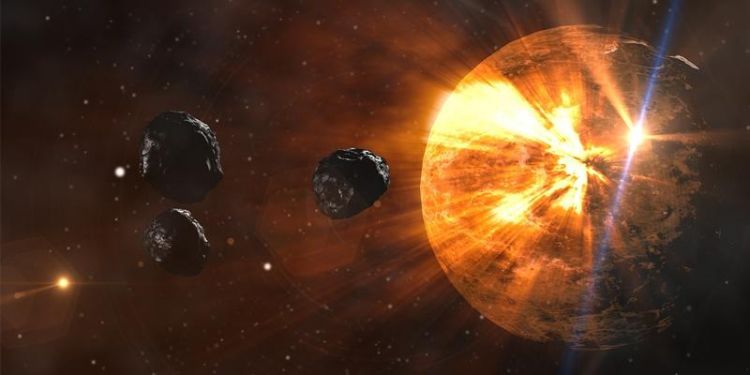Meteorite analysis reveals new information about water on Mars

Researchers from the School of Earth and Environment were part of an international team that discovered how asteroid impacts may have created running water on Mars.
The study, reported in the journal Science Advances, details how analysis of Martian meteorites revealed how asteroid impacts can create temporary sources of running water on Earth’s closest neighbour.
These meteorites, named nakhlites after the Egyptian region of El Nakhla where they were first found in 1911, contain evidence of liquid water activity on Mars that occurred some 633 million years ago.
Using a technique known as electron backscatter diffraction, the research team were able to look closely at the orientation and deformation of minerals across the Martian rock samples.
“What we’ve seen is that the pattern of deformation in the minerals matches exactly the distribution of weathering veins that formed from the Martian fluids. This coincidence provides us with exciting data about two big events from the history of those rocks,” said Dr Luke Daly, Research Associate in Solar System Science at the University of Glasgow and lead author of the paper.
The study found that around 633 million years ago, these meteorites were hit by an asteroid that deformed them into part of an impact crater. This impact melted the ice under the Martian surface, effectively forming a temporary hydrothermal system.
Regular asteroid bombardments like this may have had similar effects like this throughout the history of the Red Planet, shedding new light on how the Martian landscape could have formed.
Dr Daly added: “The second exciting thing it tells us is that the rocks must have been hit twice. A second impact about 11 million years ago had the right combination of angle and force to blast the rocks off the surface of the planet and begin their long journey through space towards Earth.”
The study was led by the University of Glasgow, together with researchers from the University of Leeds, Uppsala University, Oxford Instruments Nanoanalysis, Università di Pisa, the University of New South Wales, and Curtin University.
“Much of the research presented depended on the detailed analysis of the deformation structures in the studied meteorites,” said Sandra Piazolo, Professor of Structural Geology and Tectonics at the School of Earth and Environment at Leeds.
Professor Piazolo, a specialist in such deformation structures, played a significant role in the interpretation of the deformation structures present in these unique meteorite samples, including the numerical modelling showing the expected deformation effects associated with impacts.
Further reading
“Boom boom pow: Shock-facilitated aqueous alteration and evidence for two shock events in the Martian nakhlite meteorites”, Science Advances, L. Daly, M. R. Lee, S. Piazolo, S. Griffin, M. Bazargan, F. Campanale, P. Chung, B. E. Cohen, A. E. Pickersgill, L. J. Hallis, P. W. Trimby, R. Baumgartner, L. V. Forman, G. K. Benedix
‘Martian CSI’ reveals how asteroid impacts created running water under Red Planet, University of Glasgow




